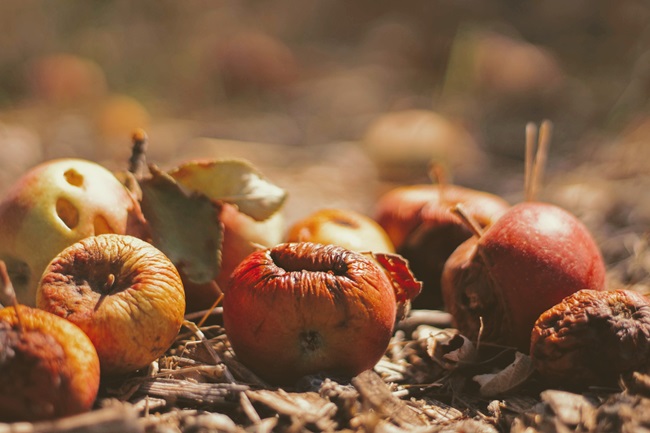
Since Vermont banned food scraps in trash in 2020, I have experimented with different approaches to composting. Backyard composting works well for about half the year in Vermont, and not at all for residents lacking back yards. None the less, my first attempt was indeed a fairly traditional three-section gardening compost approach. I really got into it, I mixed the greens with the browns as all the books suggested, and I watered it like any other thing I might like to keep alive.
And “alive” was the operative term. My composting thermometer, warmed by the collective metabolism of fungi and bacteria, peaked at 150˚F in late November but then cooled rapidly. When I dug into the pile the following May, the lower layer was indeed the crumbly brown gold I expected, but the top included a mixture of sad potato peelings, onion tops and tails, and nested piles of eggshells.
Even the most successful layers of my compost included intact eggshells. It makes sense of course; there’s not much in an eggshell for even the most persistent fungus to digest and most books advise breaking them up before adding to your pile.
But I found the nearly half a year of freezing food waste on top of my pile bothersome and particularly so when I walked right up on a skunk who seemed to have a much greater appreciation for the burgeoning pile than did my wife. And so, I moved on and investigated indoor composting approaches. At first blush, indoor composting may sound like a terrible idea that conjures images of emerging flies and assaults on your olfactory system. But I can assure you that the two approaches I tried produced neither effect.
Following directions in a New York Times article, I mixed three parts coconut coir with two parts wood ash and dumped the mix in a cardboard box I had reinforced with an extra layer of cardboard on its floor. I buried food scraps in the substrate like a cat might do in a litter box. The whole thing sat on a few pieces of 2 by 4 in my basement so that air could flow under the box and diffuse in.
The idea behind this approach is to allow aerobic bacteria and fungi to break down the food in a very dry environment. At no point did the pile stink, nor were we ever visited by insects. After four months I took the entire box outside and ran the contents through a coarse sieve I knocked together from lumber scraps and some wire mesh. Most of the food scraps I had added over the previous months were largely intact. They were thoroughly dehydrated, had a pleasant earthy smell, but were by no means broken down.
Finally, a colleague at work brought in an electric composter he had been gifted with but was too large for his kitchen. I must admit that watching a bunch of biologists play with this thing has been entertaining. We did our first run in January. We filled the contraption with citrus peels, apple cores, tea bags, coffee grounds and a few bread scraps. After adding the provided fungal pellet, we turned it on and let it run for 24 hours. It heated up as intended and the grinding blades quietly chopped and mixed the gallon or so of organic material.
The following day, we all oohed and aahed as we ran our fingers through the fine grained compost that had been miraculously produced overnight. The material had been reduced to about a third of its starting volume and had a pleasant smell perhaps dominated by orange peels, but certainly there was nothing unpleasant about it. The downside of this latter approach is the sticker price. Ranging between $250 and $500, these devices are certainly an investment.
My next-door neighbor pays for pickup service. He placed his bucket at the end of the driveway and a truck stops by. It’s a simple solution and he seems happy so far.
I must confess that despite experimenting with all of these approaches, I still launch most of my bread scraps off the back deck for the birds. If I do it early in the day, the ravens, crows, and mourning doves take care of business without complaint. Late-afternoon launched scraps tend to miss the bird shift and are instead consumed by an opossum on his night-time rounds and sometimes by a skunk. And while some may consider skunks vermin, I just consider them skunks. I don’t mess with them, and they don’t mess with me.
Whatever your approach to composting, I hope you’ll agree that any approach is better than sending food off to pointlessly occupy part of our limited Vermont landfill space.
Declan McCabe is a professor of biology at Saint Michael’s College. His forthcoming book, Turning Stones: Discovering the Life Of Water is available for pre order through Down East Books at DownEastBooks.com or where ever you find your books.






Comment here